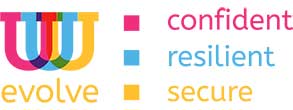All our workshops can be delivered face to face or online through the TALK hub. For more information or to book please get in touch.
This workshop is for anyone working with young people; teachers, guidance, social workers, youth workers, charities, third sector professionals, GPs, police etc.
Not all young people with trauma problems will access help from mental health professionals – so you are it! Within your scope of practice, you will learn to respond skilfully and impactfully for young people.
By the end of the course you will have;
– Increased your knowledge and understanding of how trauma impacts young people’s lives
– Skills to recognise and confidently deal with young people’s insecure attachment styles
– Practical tools to increase your trauma skills in your day to day work
– Skills in supporting young people a chance to catch up developmentally
What you’ll learn
– Types of trauma including complex trauma
– Why it is important to be a trauma-informed organisation
– How to avoid re-traumatising a young person
– Case studies – how has trauma manifested itself in, behaviour, communication style, appearance
– If you could see beneath the surface, what is really going on? – Judgments, perceptions, conclusions about a young person
– How to recognise different attachment styles in how a young person presents
– How to respond to a young person as a secondary attachment figure
– Understand the 3 insecure attachment styles and their impact on learning
– How to adapt your style to connect with insecurely attached young people
This course is a must for anyone working with young people. We explore what boundaries are and why young people need us to hold them. We also reflect on our own boundaries and responses when these are challenged.
By the end of the course you will have;
– Increased knowledge and understanding of what boundaries are
– Increased insight into your reaction to pushed boundaries
– Ability to respond, rather than react
– Understand how holding boundaries benefits young people
What you’ll learn;
– The theory behind boundaries
– Attachment awareness-why young people push boundaries
– When to flex and when to hold strong
– Different methods for responding to pushed boundaries
– Different archetypes for how we respond to our boundaries being pushed
– How young people respond when boundaries are understood and held
To be mindful is to adopt a powerful attitude that, when applied carefully, has the potential to transform our lives, improve our relationships and help us to understand ourselves and others in a deeper and more meaningful way. This course is designed to teach mindfulness directly and intelligently.
By the end of the course you will have;
– A deeper understanding of your self
– A deeper understanding of your instinctive reactions
– Knowledge of how to apply mindfulness in your day-to-day life
– A deeper sense of curiosity and appreciation about life, yourself, and others
– A greater ability to look after yourself, whenever you need
What you’ll learn;
– The neuroscience of mindfulness
– How to be mindful, and why it is important
– What to do with challenging thoughts and feelings
– How to access meditation with ease, comfort and enjoyment
– Different meditation methods
– How to apply mindfulness to your life in practical, useful ways
Some text in the modal.



